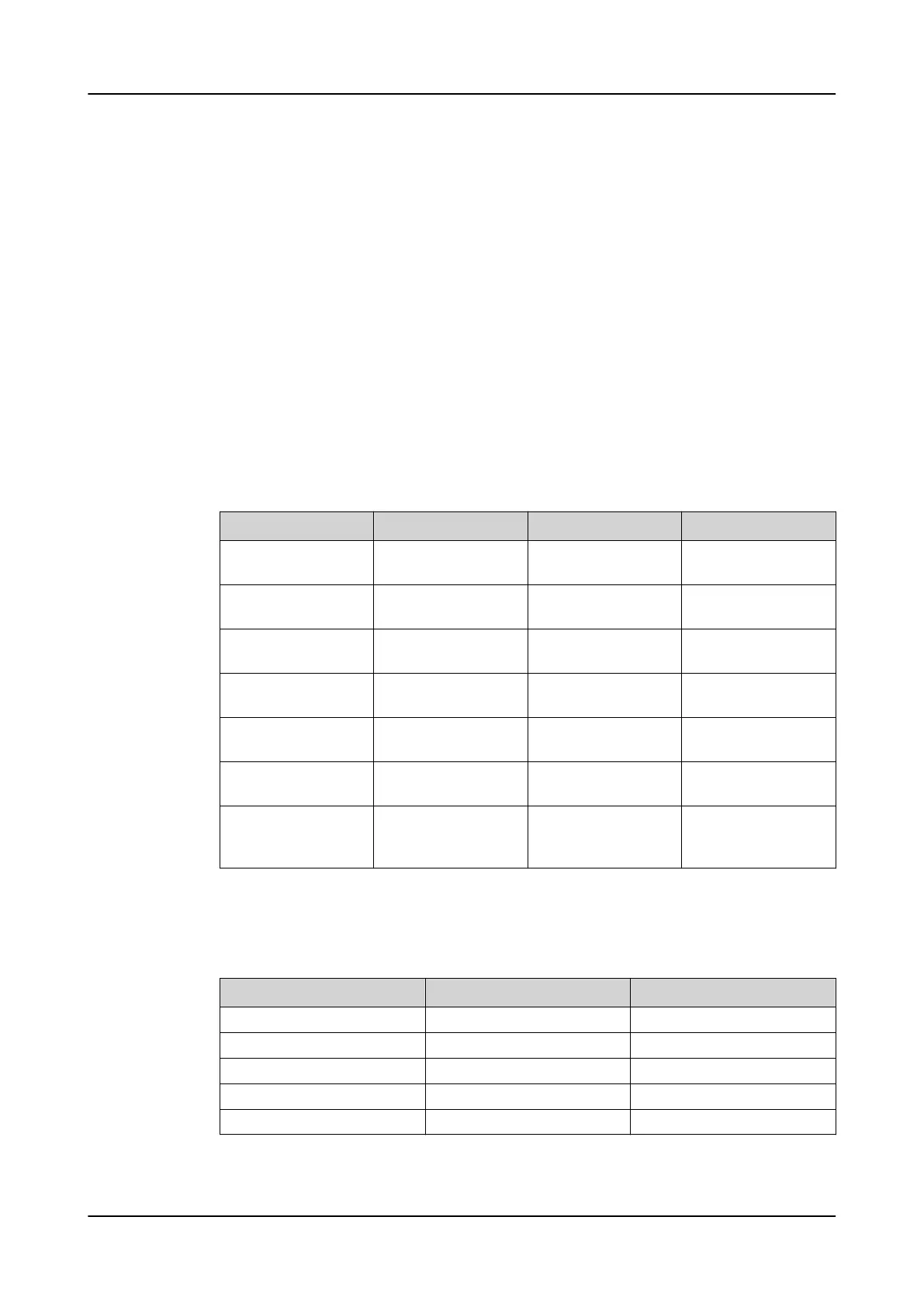in the European standard EN 50160. However, the power quality standards like the
international standard IEC 61000-4-30 specify that the voltage variation event is
characterized by its duration and magnitude. Furthermore, IEEE Std 1159-1995 gives
the recommended practice for monitoring the electric power quality.
Voltage variation measurement can be done to the phase-to-earth and phase-
to-phase voltages. The power quality standards do not specify whether the
measurement should be done to phase or phase-to-phase voltages. However, in
some cases it is preferable to use phase-to-earth voltages for measurement. The
measurement mode is always TRMS.
10.3.7 Signals
10.3.7.1 PHQVVR Input signals
Table 712: PHQVVR Input signals
Name Type Default Description
I_A SIGNAL 0 Phase A current mag-
nitude
I_B SIGNAL 0 Phase B current mag-
nitude
I_C SIGNAL 0 Phase C current mag-
nitude
U_A SIGNAL 0 Phase-to-earth volt-
age A
U_B SIGNAL 0 Phase-to-earth volt-
age B
U_C SIGNAL 0 Phase-to-earth volt-
age C
BLOCK BOOLEAN 0=False Block signal for acti-
vating the blocking
mode
10.3.7.2 PHQVVR Output signals
Table 713: PHQVVR Output signals
Name Type Description
OPERATE BOOLEAN Voltage variation detected
START BOOLEAN Voltage variation present
SWELLST BOOLEAN Voltage swell active
DIPST BOOLEAN Voltage dip active
INTST BOOLEAN Voltage interruption active
1MRS758755 C Power quality measurement functions
REC615 & RER615
Technical Manual
721

